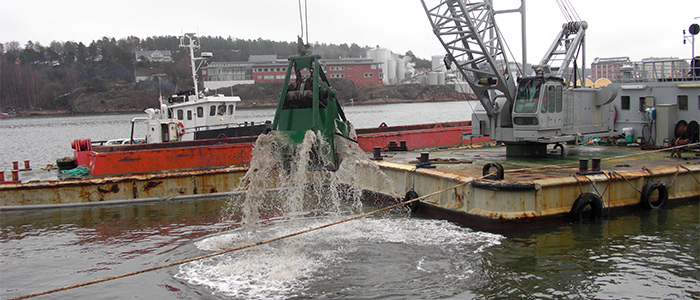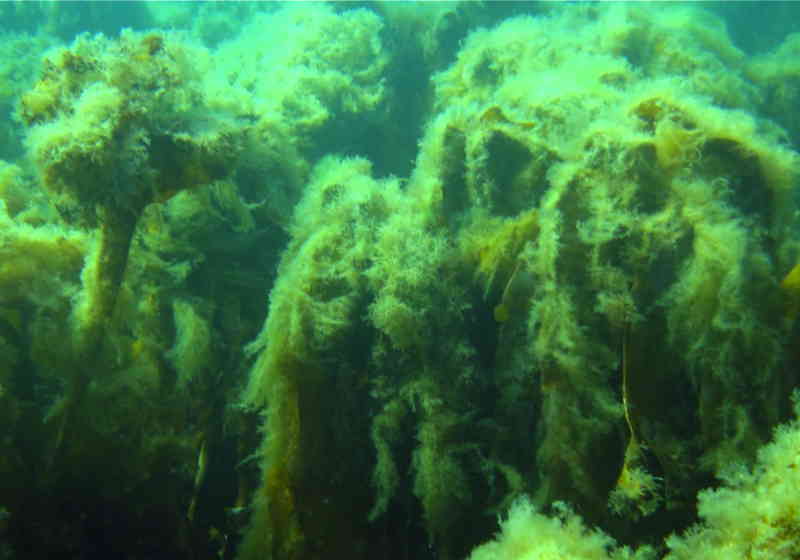Seabed sediments comprise sand, clay, gravel and organic materials. Environmental toxins bind to organic and inorganic particles and thereby often end up in the sedimentary layer when discharged to the sea.
Generally speaking, local sources are the primary contributor to seabed pollution, with industry as by far the biggest originator of these deposits.
Many sources
Environmental toxins have been introduced to Norway’s fjords for many years, but the bulk of the discharges have occurred over the past five decades.
In most areas, particularly off ports and towns, this marine pollution has many sources. Sediments in these areas often contain a blend of numerous different toxins.
Cadmium, mercury, lead, tributyltin (TBT), polychlorinated biphenyls (PCB), polycyclic aromatic hydrocarbons (PAH) and dioxins are among toxins normally found on Norwegian seabeds.
Such pollutants can spread from the sediments to the overlying water and to organisms. Certain of them are more easily soluble in water than others.
Very harmful
Environmental toxins found in seabed sediments can have a variety of harmful effects on marine organisms. These include hormonal disruptions, reduced reproductive ability, damage to immune systems and organs, cancers, higher mortality or reduced growth.
It has been established, for example, that snails can become hermaphrodites (possessing both male and female sex organs) and sterile as a result of exposure to TBT.
Environmental toxins have the ability to build up in living organisms. Such bioaccumulation in fish or shellfish, for example, can also expose humans who consume seafood to these substances.
Marine life in a number of fjords and port areas contain such high concentrations of some toxins that the Norwegian Food Safety Authority has warned against eating seafood from these locations.
Biggest polluter
Industry is by far the largest source of sedimentary pollution. Despite more stringent standards for treating and curbing them, industrial discharges remain an environmental problem.
Examples of sectors which release pollutants to water include smelters and aluminium works, chemical manufacturing, mechanical engineering and mining.
Discharges in ports represent another important source of pollution, along with run-off from towns, landfill sites and so forth on land.
The seabed can continue to be polluted in areas where industrial production, land fills or dumping grounds for waste have existed far back in the past.
Big problem
A total of 120 areas in Norwegian fjords were investigated for environmental toxins in the seabed between 1993 and 1996. About 90 were very heavily polluted with one or more of these substances.
This work has subsequently been followed up by wider investigations as well as by measures in the most heavily polluted areas.
Traditionally, Norwegian industry and ports have been located at or near the head of a fjord for protection against wind and weather as well as access to cheap hydropower from rivers.
Because the fjords are often deep, water circulation is low close to the bottom and allows industrial and port pollution to accumulate in the sediments. A number of fjords today contain pollutants deposited many decades ago.
Clean-up measures
Cleaning up the seabed is expensive because the areas involved are so large. County governors have produced action plans for such clean-ups in 29 coastal and fjord areas. Seventeen of the most polluted areas have been given priority.
Investigations are still on-going, but detailed plans have been drawn up in a number of places and work to remove pollution is under way or nearing completion.
Shipyards are an important source of seabed pollution. As a follow-up to the government’s action plan on contaminated sediments, the environmental status of land and seabed areas has been investigated around roughly 100 yards thought to be the most polluted along the Norwegian coast.

